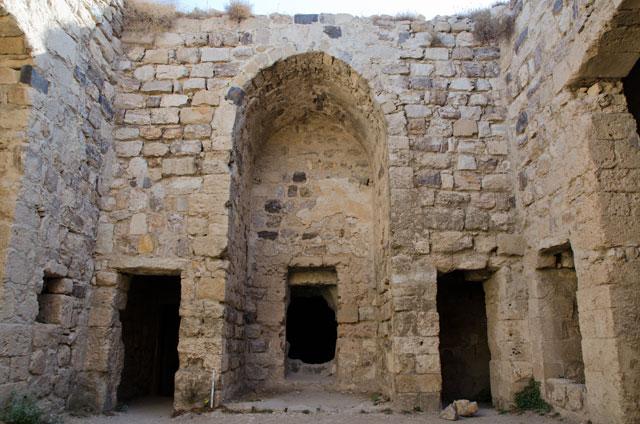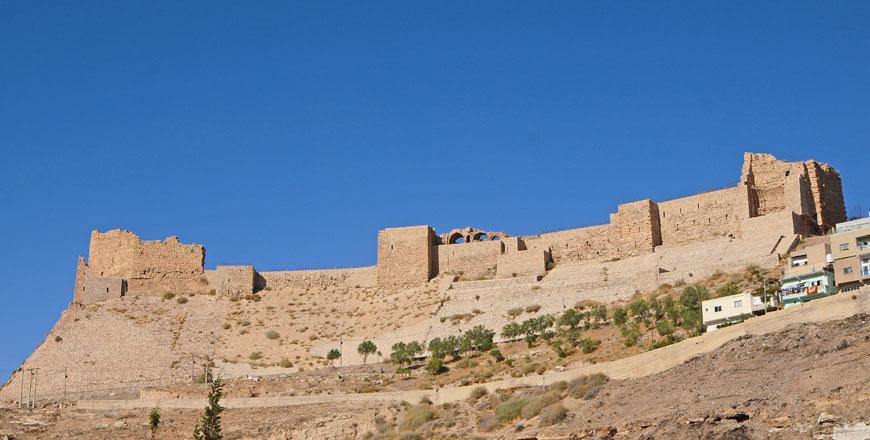You are here
Italian scholar explores Ayyubid palatine complexes of Karak and Shawbak
By Saeb Rawashdeh - Nov 20,2017 - Last updated at Jun 23,2018

The Ayyubid reception hall in Karak palace (Photo courtesy of Lorenzo Fragai)
AMMAN — In 1189, after the victorious siege which started in 1187 and the crusaders’ fall of Hatting, Saladin came into possession of the castles of Shawbak and Karak, where the largest settlement and administrative centre of Latin Transjordan was located, said Lorenzo Fragai, an Italian scholar in mediaeval archaeology.
“The Ayyubid dynasty invested considerable economic and political resources in both sites, turning them into the main governmental centres of Ayyubid Jordan, and constructing new fortresses such as Ajlun,” Fragai told The Jordan Times in an e-mail interview.
According to Fragai, the location of the main Ayyubid palatine complexes in the region in Shawbak and Karak, in addition to that of Ajlun, is in direct continuity with the political and administrative systems developed by the first half of 12th century by the lords of Latin Transjordan.
Reception halls can be considered as the most important architectural and ideological spaces in Mediterranean palace complexes of many historical periods, he noted.
As a powerful expression of governance, the Ayyubid reception halls (qaa) provided seats of authority for the sultans, administration, military command and control over economic resources, he emphasised, adding that they reflect simultaneously functional requirements and elements of palatine protocol, in addition to being a cultural hallmark of the Muslim Levant from the 12th to the 13th centuries.
“While the written sources for the Umayyad, Abbasid and Fatimid palatine protocols are rather exhaustive, the sources for the Ayyubid period are very scarce; therefore, the archaeological evidences and architectural surveys become very important,” Fragai underlined.
The cases of Shawbak and Karak suggest interesting observations about the development of palatine protocol and ceremonial in the Ayyubid period, said the archaeologist, who is a member of the Italian archaeological mission in Jordan called “Mediaeval Petra”.
In 2016, the mission, which is run in cooperation with the Department of Antiquity, celebrated its 30th anniversary since its establishment in Jordan by Professor Guido Vannini from the University of Florence.
“After the death of Saladin in 1193, his brother Adil I dominated the Ayyubid scene, both through political and military means, as well as [ideologically] through expensive building programmes centered on palatine architecture,” the scholar continued.
Fragai said it is necessary to highlight the strong iconographic similarity between Ayyubid reception halls and palatine Abbasid architectures in Samarra in the 9th century, adding “In fact, all major components found within the Ayyubid reception halls — four-iwans plans, tripartite elevation, ornaments, portals and muqarnas — repeat well-establish formal types of Early Islamic palaces,” he stated.
“As Yasser Tabbaa [an expert in Islamic art and Islamic architecture] observed in his work on Ayyubid Aleppo published in 1997, a clear difference between Early Islamic buildings and the Ayyubid ones can be found in the dimensions.
“However, this aspect seems to allude to the willing conjuring, by the Ayyubid, of a golden age which they clearly didn’t want to ignore,” the Italian researcher underlined.
“At the moment, I am conducting some investigation based on the stratigraphic analyses of Ayyubid/Mamluk reception halls in Karak castle,” he said, noting that he will keep working with the Italian archaeological mission of Florence over the next few months.
Related Articles
Amman — Karak Castle is the most famous Crusader-Islamic military site in Jordan and appears today as a perfect summary of Crusaders’, Ayyub
AMMAN — Despite being one of the best-preserved crusader castles in Jordan and the Near East, Karak Castle is “certainly one of the least st
KARAK — By analysing the architecture and historical documentation, it is possible to reconstruct a detailed history of the Karak Castle dur


















